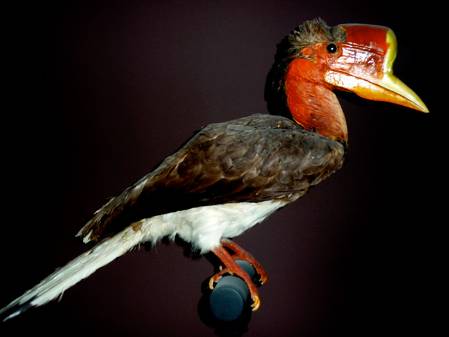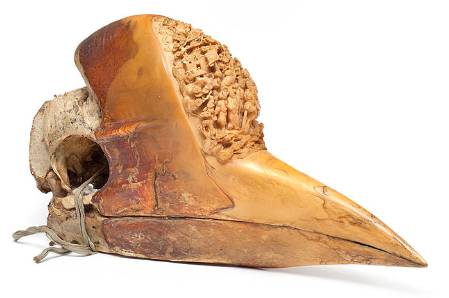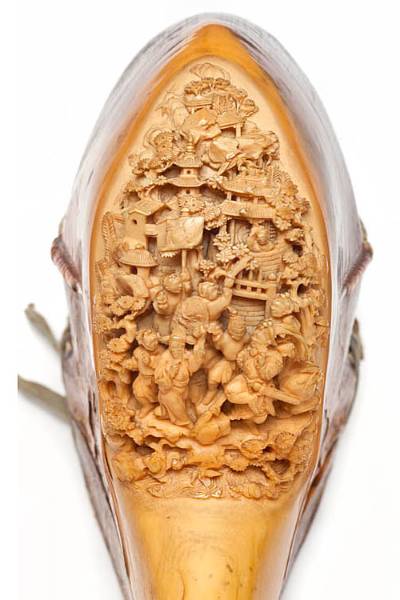Art is only nature operating with the aid of the instruments she has made
Paul Henri, Baron d'Holbach; French philosopher
Rarely have I come across a quote more fitting, than the above to the subject of this month's blog: a carved hornbill skull held in the bird collection at Tring.
By the accounts of all those who have had the pleasure of viewing the skull in the flesh (or in the bone, I should say) it is a truly remarkable thing. While other Museums do have examples of carved hornbill skulls, most are just etched, rather than actually carved in relief like the specimen I'm featuring today.
Jo Cooper, Senior Curator of the Avian Anatomical Collections at Tring, says:
It's a rather spectacular thing, and it's quite a rare piece.
Our specimen is crafted from a helmeted hornbill (Rhinoplax vigil), a species found on the Malay peninsula, Sumatra and Borneo. It is the bird's casque - an ivory-like plate at the front of the head which it uses for fighting, or jousting - that features our intricate artwork. The helmeted hornbill is the only hornbill with a solid casque (and therefore the only one suitable for carving). The composition of other species' is more spongey or honeycomb-like. Such is the density of the helmeted hornbill's casque, it is said to make up around a third of the weight of the bird.
A helmeted hornbill (Rhinoplax vigil) with it's large and heavy casque. © Citron, CC BY-SA 3.0
The carving on our skull depicts a Chinese battle scene, set in a town by a river. There is also a figure holding a flag bearing the Chinese wén character, which can be translated to mean literature and culture. Jo says:
The level of detail is extraordinary, to the point there's a tiny bird, a kingfisher, which can be seen diving.
The solid casque of the helmeted hornbill is the only one suitable for carving, which is exquisitely intricate and detailed in our specimen of the month.
The specimen was acquired by Tring several years ago and was presented to the Museum by former curator Philip Burton, following his retirement. Burton had been given it by an eminent ornithologist.
Its origin dates to the 19th century, but Burton's and the Museum's records can only account for it up to the 1950s. Jo says:
Before that, we just don't know its history, but it is an antique object that goes back well into the 1800s.
The Museum consulted with experts at the Victoria & Albert Museum to help establish the specimen's provenance, and they confirmed that it was most likely created in China because the country had an established trade out of Borneo of the rare hornbill ivory. The Chinese often used it to make decorative belt buckles, snuff boxes and other small accoutrements.
Our beautiful hornbill specimen is not on public display, but Jo says it is very much at home at Tring:
This is the kind of thing you'd expect to see in the V&A or the British Museum, but actually it has a zoological interest too, so I think it's a good fit for Tring. It's also about cultural use and cultural relations, and that's what a lot of our collection is about as well.
We have a few (other similar) artifacts, in terms of things that have been modified, but nothing on par with this.
Spot the kingfisher?






